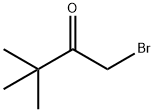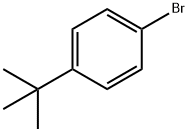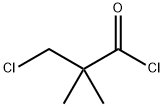2,2-DIMETHYLPROPANE
- CAS NO.:463-82-1
- Empirical Formula: C5H12
- Molecular Weight: 72.15
- MDL number: MFCD00039840
- EINECS: 207-343-7
- SAFETY DATA SHEET (SDS)
- Update Date: 2025-07-04 15:18:29

What is 2,2-DIMETHYLPROPANE?
Chemical properties
Colorless gas or very volatile liquid.Soluble in alcohol; insoluble in water.
Chemical properties
Neopentane is an extremely flammable gas and volatile liquid.
Chemical properties
2,2-Dimethylpropane, C5H12, is a flammable liquid and is physically similar to butane. It is an important component of petroleum fuel mixtures.
Physical properties
Colorless, extremely flammable gas which may have a faint, pleasant odor similar to butane. Usually present as a compressed gas or liquid.
The Uses of 2,2-DIMETHYLPROPANE
2,2-Dimethylpropane is manufactured by petroleum refining operations. It is used as a chemical intermediate for agricultural chemicals, and as a component of high-octane motor and aviation fuels.
The Uses of 2,2-DIMETHYLPROPANE
Research, butyl rubber.
The Uses of 2,2-DIMETHYLPROPANE
Neopentane is a useful hydrocarbon solution to study intermolecular potential functions for liquid hydrocarbons.
Definition
ChEBI: Neopentane is an alkane.
General Description
Boiling point 40°F. May liquefy in cool or cold weather. Less dense than water. Flash point -85°F. Autoignition temperature 842°F. Insoluble in water but soluble in alcohol. Under prolonged exposure to fire or heat, the containers may rupture violently and rocket.
Air & Water Reactions
Highly flammable. Insoluble in water.
Reactivity Profile
2,2-DIMETHYLPROPANE may be incompatible with strong oxidizing agents like nitric acid. Charring may occur followed by ignition of unreacted hydrocarbon and other nearby combustibles. In other settings, mostly unreactive. Not affected by aqueous solutions of acids, alkalis, most oxidizing agents, and most reducing agents. Burns exothermically if heated sufficiently or when ignited in the presence of air, oxygen or strong oxidizing agents to produce carbon dioxide and water.
Hazard
Highly flammable, dangerous fire risk, explosive limits in air 1.4–7.5%
Health Hazard
Vapors may cause dizziness or asphyxiation without warning. Some may be irritating if inhaled at high concentrations. Contact with gas or liquefied gas may cause burns, severe injury and/or frostbite. Fire may produce irritating and/or toxic gases.
Fire Hazard
EXTREMELY FLAMMABLE. Will be easily ignited by heat, sparks or flames. Will form explosive mixtures with air. Vapors from liquefied gas are initially heavier than air and spread along ground. CAUTION: Hydrogen (UN1049), Deuterium (UN1957), Hydrogen, refrigerated liquid (UN1966) and Methane (UN1971) are lighter than air and will rise. Hydrogen and Deuterium fires are difficult to detect since they burn with an invisible flame. Use an alternate method of detection (thermal camera, broom handle, etc.) Vapors may travel to source of ignition and flash back. Cylinders exposed to fire may vent and release flammable gas through pressure relief devices. Containers may explode when heated. Ruptured cylinders may rocket.
Safety Profile
Poison by intraperitoneal route. An inhalation hazard. Both the gas and the liquid are flammable when exposed to heat or flame; can react vigorously with oxidlzing materials. When heated to decomposition it emits acrid smoke and irritating fumes.
Potential Exposure
Neopentane is used as a gasoline blending component; for making butyl rubber. A research chemical. Reacts with strong oxidizers, causing fire and explosion hazard. Attacks some plastics, rubbers, and coatings.
Source
California Phase II reformulated gasoline contained 2,2-dimethylpropane at a concentration of 110 μg/kg (Schauer et al., 2002).
Environmental Fate
Photolytic. A rate constant of 6.50 x 10-11 cm3/molecule?sec was reported for the reaction of 2,2-
dimethylpropane with OH radicals in air at 298 (Greiner, 1970). Rate constants of 9.0 x 10-13 and
8.49 x 10-13 cm3/molecule?sec were reported for the reaction of 2,2-dimethylpropane with OH in
air (Atkinson et al., 1979; Winer et al., 1979).
Chemical/Physical. Complete combustion in air yields carbon dioxide and water vapor. 2,2-
Dimethylpropane will not hydrolyze because it has no hydrolyzable functional group.
Shipping
UN2044 2,2-Dimethylpropane, Hazard Class: 2.1; Labels: 2.1-Flammable gas. Cylinders must be transported in a secure upright position, in a well-ventilated truck. Protect cylinder and labels from physical damage. The owner of the compressed gas cylinder is the only entity allowed by federal law (49CFR) to transport and refill them. It is a violation of transportation regulations to refill compressed gas cylinders without the express written permission of the owner.
Purification Methods
It is freed from isobutene by passage over conc H2SO4 or P2O5, and through silica gel. [Beilstein 1 H 141, 1 I 50, 1 II 104, 1 369, 1 IV 333.] Nerolidol (3,7,11-trimethyl-1,6,10-dodecatrien-3-ol) M 222.4 [cis/trans 7212-44-4] b
Incompatibilities
Incompatible with oxidizers (chlorates, nitrates, peroxides, permanganates, perchlorates, chlorine, bromine, fluorine, etc.); contact may cause fires or explosions. Keep away from alkaline materials, strong bases, strong acids, oxoacids, epoxides.
Waste Disposal
Return refillable compressed gas cylinders to supplier. Dissolve or mix the material with a combustible solvent and burn in a chemical incinerator equipped with an afterburner and scrubber. All federal, state, and local environmental regulations must be observed.
Properties of 2,2-DIMETHYLPROPANE
| Melting point: | -19.8° |
| Boiling point: | bp 9.5° |
| Density | d00 0.613 (liq) |
| vapor pressure | 1,074.43 at 19.492 °C, 1,267.75 at 24.560 °C (ebulliometry, Osborn and Douslin, 1974) |
| refractive index | 1.3390 |
| solubility | Soluble in alcohol and ether (Weast, 1986). |
| pka | >14 (Schwarzenbach et al., 1993) |
| Water Solubility | 33.2 mg/kg at 25 °C (shake flask-GC, McAuliffe, 1966) |
| Henry's Law Constant | 3.70(atm?m3/mol) at 25 °C (Mackay and Shiu, 1981) |
| Dielectric constant | 1.9099999999999999 |
| Exposure limits | ACGIH TLV: TWA 600 ppm (adopted). |
| CAS DataBase Reference | 463-82-1(CAS DataBase Reference) |
| EPA Substance Registry System | 2,2-Dimethylpropane (463-82-1) |
Safety information for 2,2-DIMETHYLPROPANE
| Signal word | Danger |
| Pictogram(s) |
 Flame Flammables GHS02  Gas Cylinder Compressed Gases GHS04  Environment GHS09 |
| GHS Hazard Statements |
H220:Flammable gases H280:Gases under pressure H411:Hazardous to the aquatic environment, long-term hazard |
| Precautionary Statement Codes |
P210:Keep away from heat/sparks/open flames/hot surfaces. — No smoking. P273:Avoid release to the environment. P280:Wear protective gloves/protective clothing/eye protection/face protection. |
Computed Descriptors for 2,2-DIMETHYLPROPANE
New Products
BOC-L-4-HYDROXYPROLINE 2-nitro 3-hydroxy pyridine 2,6-Dichloropyridin-4-amine 2,3 Diamino pyridine 5-Iodo-2-(1-methylethyl)-3(2H)-pyridazinone 1-Azetidinecarboxylic acid, 3-[(3S)-1-(trans-3-carboxy-3-methylcyclobutyl)-3-piperidinyl]-, 1-(1,1-dimethylethyl) ester Tert-Butyl N-[3-(dimethylcarbamoyl)prop-2-en-1-yl]carbamate 1-(difluoromethyl)-N-methylcyclobutan-1-amine 2-(4-Methyl-1,2,5-oxadiazol-3-yl)-1H-benzimidazole 6-(4-iodophenyl)-1-oxa-6-azaspiro[3.3]he Trimethyl(phenylthio)silane Polycaprolactone(2000)-PEG(20000)-Polycaprolactone(2000) Diacrylate Diethylene Glycol Monoethyl Ether, PolyoxyethyleneOleylCetylEtherSulfosuccinate Ascorbyl Tetraisopalmitate or Tetrahexyldecyl Ascorbate Castor Oil, Ethoxylated, Cremophor EL or PEG-35 Castor Oil Tween 20 or Polysorbate 20 Acetone-d6 (R)-2-Mercaptobutanoic acid 3-iodo-1H-pyrazolo[3,4-d]pyrimidin-4-amine 3-(naphthalen-1-ylsulfonyl)-1H-indazol-5-amine methyl 5-amino-3-(1,1-dioxidotetrahydro-2H-1,2-thiazin-2-yl)-2-fluorobenzoate 7-methoxy-8-(2-morpholinoethoxy)-4-((3,4,5-trimethoxyphenyl)amino)benzo[g]quinoline-3-carbonitrile Dimethylaluminum isopropoxideRelated products of tetrahydrofuran








You may like
-
 2528-61-2 Heptanoyl chloride 98%View Details
2528-61-2 Heptanoyl chloride 98%View Details
2528-61-2 -
 Sodium Stearyl Fumarate 98%View Details
Sodium Stearyl Fumarate 98%View Details
4070-80-8 -
 Testosterone Enanthate 315-37-7 98%View Details
Testosterone Enanthate 315-37-7 98%View Details
315-37-7 -
 121-54-0 Benzethonium Chloride 98%View Details
121-54-0 Benzethonium Chloride 98%View Details
121-54-0 -
 5721-91-5 98%View Details
5721-91-5 98%View Details
5721-91-5 -
 Calcium 11% clear solution 98%View Details
Calcium 11% clear solution 98%View Details -
 Sodium Croscarmellose 98%View Details
Sodium Croscarmellose 98%View Details
74811-65-7 -
 16455-61-1 98%View Details
16455-61-1 98%View Details
16455-61-1
